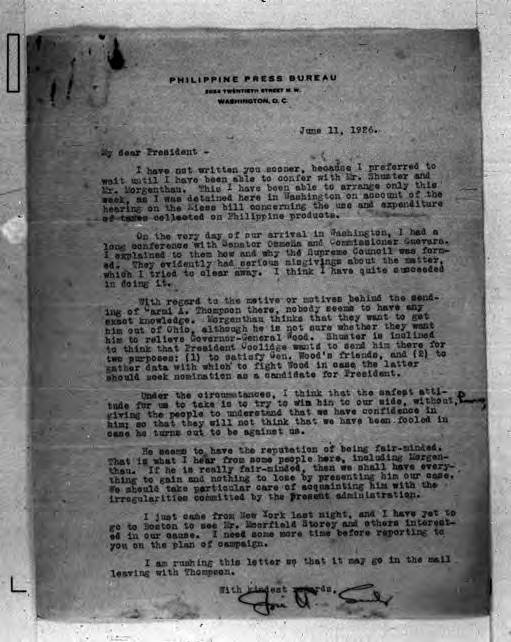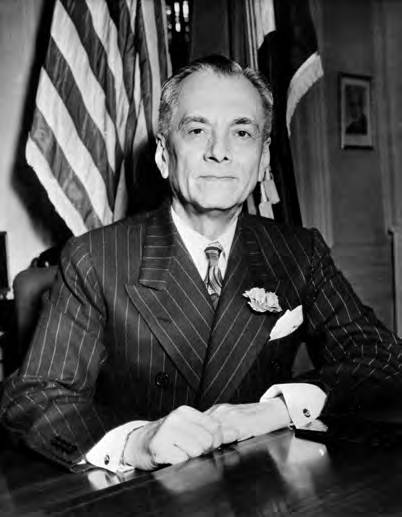
Presidential Papers of Manuel L. Quezon
Philippines - 1. The National Library (Manila, Philippines), 2. Jorge B. Vargas Museum and Filipiniana Research Center, 3. Bentley Historical Libary, University of Michigan
Story
The Philippine people rose up against their colonial overlords, Spain, in the Revolution of 1896-1898, but, having ejected the Spanish, found that the United States had taken over as colonial overlord in their place. This resulted in the Philippine-American War of 1899-1902 as the Philippine people tried to assert their independence. Eventually, the United States Government agreed to a programme granting ever greater independence and selfgovernment to the Philippines. Manuel Quezon (1878-1944) was central to all of this. He fought in the Philippine-American War, established the Nationalist Party (dedicated to achieving independence for the Philippines) in 1906, represented the Philippines in the U.S. Congress from 1909 to 1916, then took the post of President of the Philippine Senate from 1916 to 1935, when he became First President of the Commonwealth of the Philippines (this was a transitional post, which was designed to lead to full independence in 1946). Finally after the Japanese Occupation of the Philippines, he was President of the Philippine Government-inExile in Washington from 1942 until his death in 1944.
The experience of the Philippines, achieving full independence in accordance with an agreed programme granted by the colonial power, is a matter of great world historical importance, and the role of Manuel Quezon from 1906 to 1944 is central to this basically violence-free ending of colonialism. The Philippines in the American period between 1898 and 1946 is one which has been of great influence in many other places. Quezon's papers, comprising drafts of speeches, copies of letters, press clippings and much else are witnesses to Quezon's work, character and influence. They also include the records of the Philippine Commonwealth Governmentin-Exile. The Collection was inscribed on the Asia-Pacific Memory of the World Register in 2010 and in the International Memory of the World Register in 2011.
Images
Location
Information
- Registration Year:
2010
- Related Repositories
- Bentley Historical Libary, University of Michigan
- Jorge B. Vargas Museum and Filipiniana Research Center
- The National Library (Manila, Philippines)
- Download
- Nomination Form

